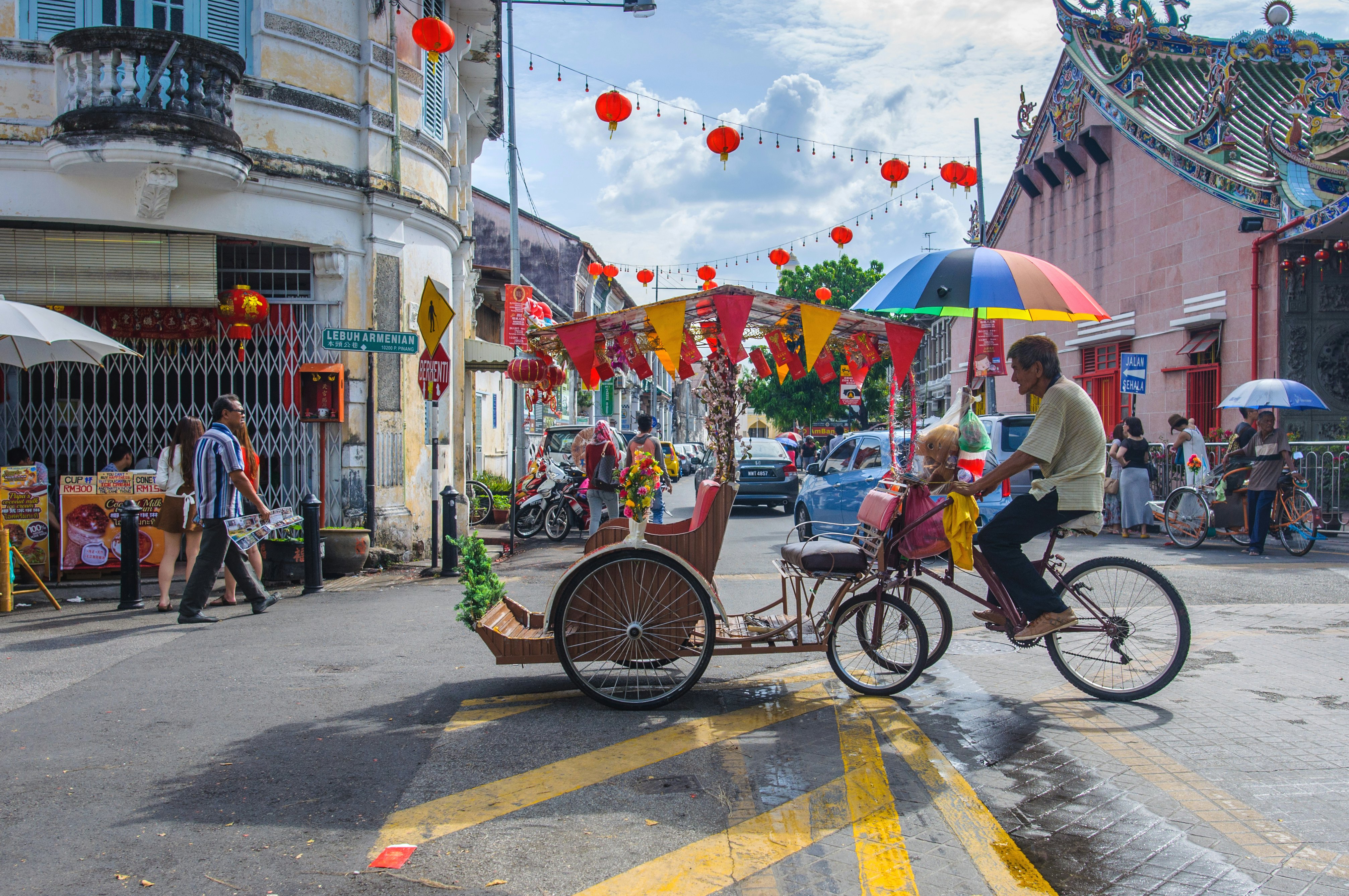
Thereโs never a bad season to visit Kuala Lumpurโs hawker stalls. Muhd Hidayatullah for ฬวะฤดซรฝ
There is no single โbestโ time to visit Malaysia โ largely since this Southeast Asian powerhouse sprawls over two separate landmasses with different local climates. And that sprawl is impressive: itโs as far from Kuala Lumpur in Peninsular Malaysia to Sandakan in Malaysian Borneo as it is from New York City to Miami.
Even between smaller distances, the climate can vary depending on which of Malaysiaโs many coasts or which of its islands you find yourself on. Langkawi lies only 122km (76 miles) from Penang, but the weather can be different in the two places on the very same day.
Broadly, Malaysia has two climatic seasons: dry and hot, and wet and hot. Donโt let the term โdry seasonโ fool you, however: itโs humid in Malaysia all year long, and thereโs always a chance of rain. The only place where it might feel cold is in upcountry areas such as the Cameron Highlands, where the temperature can range from lows of 14ยบC (58ยบF) to highs of 24ยบC (76ยบF).
What marks out the wet season is buckets of monsoon rain, with the bulk of the precipitation tending to arrive in the afternoon. The eastern side of the peninsula sees its heaviest rainfall during the northeast monsoon from mid-October to March, while the west coast sees more rain during the southwest monsoon from May to October. Borneo gets drenched from November to February.
Even with the tendency toward wetness, tourism never takes a break in Malaysia โ so thereโs not really a low season per se. The busiest times of year tend to coincide with school holidays, which see large numbers of visitors (particularly families) arriving from Europe, the Persian Gulf and neighboring Asian states.

The DecemberโFebruary high season is the best time to visit the west coast of Peninsular Malaysia
The northeast monsoon drenches the east coast of the peninsula from October to March, with the heaviest rainfall from December to February. Youโll find drier weather on the west coast, which fronts the Andaman Sea. This time frame is a good time to hit the beaches on tropical islands such as Langkawi, or wander the narrow, shop-house-lined alleyways of George Town in Penang. On the flip side, this is the wettest time of year in Sabah and Sarawak in Malaysian Borneo.
The downside of the wonderful weather in the west? More crowds and higher rates for hotels. Yet the premium may be worth paying to join in the several major cultural festivals โ including the Chinese New Year and the spectacular Hindu festival of Thaipusam, with its processions, piercings and ritual mortification โ that occur in late January or early February. If you cross the South China Sea to Sarawak, youโll find reduced hotel rates in Kuching. But in the hinterland, good roads become bad roads, and bad roads become mud.

The MarchโMay shoulder season sees the best weather across (most of) Malaysia
Large areas of Malaysia get a break from the rains (and the worst of the humidity) during the northern hemisphere spring, from March to May. This is as reliable a window as youโll find if youโre interested in beaches and warm but not sweltering weather. Not coincidentally, this is also a good time for spotting wildlife in Malaysiaโs wonderful national parks.
April is a particularly fine time to visit Sabah, as the drier days sync well with outdoor activities such as diving and hiking to the summit of Mt Kinabalu. (We also recommend Sabahโs each May.) Yet donโt think Malaysiaโs regional variations wonโt come into play in this time frame: April is one of the wettest months to visit Kuala Lumpur. (Which means itโs one of the best months to eat your way through the city.)

The JuneโSeptember high season is the best time to visit Kuala Lumpur and the east coast
The northern hemisphere summer months are the driest time of year in KL. (Although, again, โdryโ is a relative term in this tropical country. You should always expect humidity to be a factor, especially in Malaysiaโs cities, where buildings can block the breezes.) The weather is also comparatively dry on the east coast of the peninsula, and in many parts of Borneo. At the beginning of June, the Gawai Festival celebrates the culture of the Dayak people of Borneo. And the exciting draws crowds to Penang.
This season is a popular time for tourism from the Gulf States, and thereโs an upturn in visits to dive resorts on the drier east coast as underwater visibility improves. Cultural events โ such as the and the in Kuching โ fill the July calendar.
By August, the rains begin to return, building up toward the northeast monsoon. Hari Merdeka, Malaysiaโs National Day, brings parades and patriotic events all over the country at the end of August โ rains be damned.

The OctoberโNovember shoulder season is the top time to visit Melaka and the Cameron Highlands
The rains really pick up on the peninsula from October to November, although they weirdly spare the historic port of Melaka. The start of the northeast monsoon is also a good time to explore the Cameron Highlands, as the upcountry flora bursts into life thanks to all the rainfall.
In other areas of the country, this is a time to look for competitive hotel rates (and an umbrella). Yet this is a good season to visit if youโre into malls, museums and other indoor activities; shops will be offering sales and the big cities offer plenty of indoor fun.

